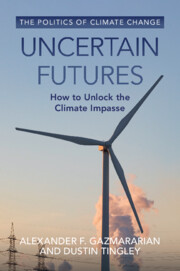126 results
Optimal taxes and basic income during an episode of automation: a worker’s perspective
-
- Journal:
- Macroeconomic Dynamics , First View
- Published online by Cambridge University Press:
- 23 September 2024, pp. 1-27
-
- Article
-
- You have access
- Open access
- HTML
- Export citation
High accuracy hybrid kinematic modeling for serial robotic manipulators
-
- Journal:
- Robotica , First View
- Published online by Cambridge University Press:
- 19 September 2024, pp. 1-19
-
- Article
-
- You have access
- HTML
- Export citation
Demographic change, secular stagnation, and inequality: automation as a blessing?
-
- Journal:
- Journal of Demographic Economics , First View
- Published online by Cambridge University Press:
- 18 September 2024, pp. 1-41
-
- Article
-
- You have access
- HTML
- Export citation
Universal Credit: administrative burdens of automated welfare
-
- Journal:
- Journal of Social Policy , First View
- Published online by Cambridge University Press:
- 18 September 2024, pp. 1-19
-
- Article
-
- You have access
- Open access
- HTML
- Export citation
4 - Artificial Intelligence in the Production Function
-
- Book:
- Artificial Intelligence
- Published online:
- 23 May 2024
- Print publication:
- 30 May 2024, pp 83-106
-
- Chapter
- Export citation
12 - Perioperative Goal-Directed Hemodynamic Therapy
- from Section 3 - Practical Use
-
-
- Book:
- Hemodynamic Monitoring and Fluid Therapy during Surgery
- Published online:
- 11 April 2024
- Print publication:
- 02 May 2024, pp 125-135
-
- Chapter
- Export citation
Introduction - The Paradox of Homeric Creativity
-
- Book:
- Homer's Living Language
- Published online:
- 11 April 2024
- Print publication:
- 18 April 2024, pp 1-4
-
- Chapter
- Export citation
Automation, job reallocation, occupational choice, and related government policy
-
- Journal:
- Macroeconomic Dynamics , First View
- Published online by Cambridge University Press:
- 27 March 2024, pp. 1-30
-
- Article
-
- You have access
- HTML
- Export citation
Attitudes toward automation and the demand for policies addressing job loss: the effects of information about trade-offs
-
- Journal:
- Political Science Research and Methods , First View
- Published online by Cambridge University Press:
- 15 February 2024, pp. 1-16
-
- Article
-
- You have access
- Open access
- HTML
- Export citation
A review of bioinspired locomotion in lower GI endoscopy
- Part of
-
- Journal:
- Robotica , First View
- Published online by Cambridge University Press:
- 22 January 2024, pp. 1-11
-
- Article
-
- You have access
- Open access
- HTML
- Export citation
Fractional order inspired iterative adaptive control
-
- Article
-
- You have access
- Open access
- HTML
- Export citation
The race between offshoring and automation in explaining wage polarization
-
- Journal:
- Macroeconomic Dynamics , First View
- Published online by Cambridge University Press:
- 27 October 2023, pp. 1-35
-
- Article
-
- You have access
- HTML
- Export citation
Automation versus openness: support for policies to address job threats
-
- Journal:
- Journal of Public Policy / Volume 44 / Issue 1 / March 2024
- Published online by Cambridge University Press:
- 09 October 2023, pp. 1-23
-
- Article
-
- You have access
- HTML
- Export citation
Semantic 3D city interfaces—Intelligent interactions on dynamic geospatial knowledge graphs
-
- Journal:
- Data-Centric Engineering / Volume 4 / 2023
- Published online by Cambridge University Press:
- 06 September 2023, e20
-
- Article
-
- You have access
- Open access
- HTML
- Export citation
Automating Intervention in Chinese Justice: Smart Courts and Supervision Reform
-
- Journal:
- Asian Journal of Law and Society / Volume 10 / Issue 3 / October 2023
- Published online by Cambridge University Press:
- 25 July 2023, pp. 463-489
-
- Article
-
- You have access
- Open access
- HTML
- Export citation
1 - Introduction
-
- Book:
- Uncertain Futures
- Published online:
- 06 July 2023
- Print publication:
- 20 July 2023, pp 1-33
-
- Chapter
- Export citation

Uncertain Futures
- How to Unlock the Climate Impasse
-
- Published online:
- 06 July 2023
- Print publication:
- 20 July 2023
2 - What Is the Fourth Industrial Revolution?
-
- Book:
- Africa's Fourth Industrial Revolution
- Published online:
- 08 June 2023
- Print publication:
- 22 June 2023, pp 8-23
-
- Chapter
- Export citation

New Frontiers in Language and Technology
-
- Published online:
- 16 June 2023
- Print publication:
- 13 July 2023
-
- Element
- Export citation

